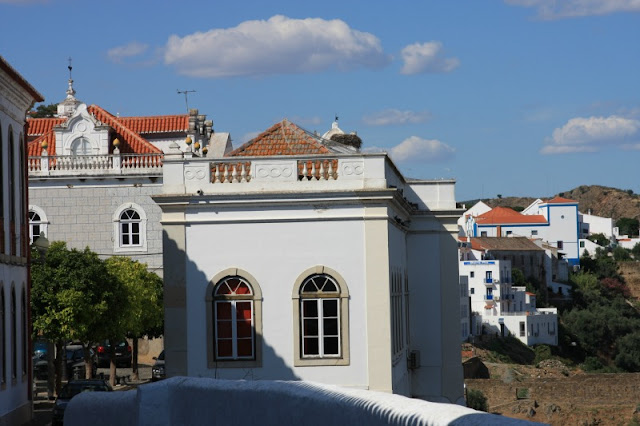Wednesday, 24 August 2016
Chronicles from Alentejo | Mértola
If there's one thing that characterizes Alentejo, beyond the golden plains, is its whitewashed walls, reflecting and multiplying the light.
For me, this is Alentejo. It is this raw and sweet light of noon, reflected in the narrow streets, where the sun falls steeply. It is the warm, golden light of late afternoon, giving the fields a stubble skin tone and the air of a sleeping body on the sun set.
Last summer I returned to Mértola! Beautiful Mértola, by the river. Mértola the Roman, the Moorish, the Christian, holds such a rich historie, resuming from each stone, that is impossible not to love it. Close to Algarve and to the border with Spain is a place one can't miss while visiting Alentejo.
Its millennial history reports to the presence of Phoenicians and Carthaginians, and after the Romans, who called it Myrtilis Iulia. Its strategic location, on the top of a hill overlooking a navigable part of the Guadiana river, was crucial for its early development.
With the Moorish occupation Myrtilis became Martulah, and played an important economic role in the commerce of agricultural and mineral goods between the Alentejo and other parts of Al-Andalus and Northern Africa.
One of the icons of Mértola is its castle, rising from the top of the hill and extending its walls down to the river around the town. Mértola had a wall, dating from Roman times, but the Muslims built new fortifications and a castle to protect it from rival Muslim and Christian states. Allthough the castle is of Muslim origin, the current building dates from a reconstruction carried out after the town was taken by the Christians. The most notable feature of the castle is its 30 metre-high keep tower, finished around 1292, which has an inner hall covered with Gothic vaulting. The defences include a city wall, which still encircles the town.
The main Church of Mértola (Matriz), with its whitewashed walls, was originally an ancient Arabic Mosque. Built in the twelfth century, was converted into a Christian church after the conquest of the town, preserving, nevertheless, many of its original characteristics. In the 16th century the church was partially remodeled, gaining a new roof and a new main portal in Renaissance style. Nevertheless, the inner arrangement, with four naves and several columns, strongly resembles that of the original mosque, and the interior of the church still has the mihrab, the decorated niche that indicates the direction of the Mecca. Outside, the church has four portals with horseshoe arches, typical of Islamic architecture. Today, it is classified as a National Monument.
The museum of Mértola, consisting mostly of archaeological findings and excavations, has its collections distributed all over the town. The nucleus of Islamic art in the museum is the most important in Portugal, consisting of various objects (pottery, glassware, metalwork, coins) dating from the period of Islamic domination. Other exhibits include remnants of an ancient Christian church, and excavations of a Roman house found under the Municipality building.
Subscribe to:
Post Comments (Atom)





















No comments:
Post a Comment